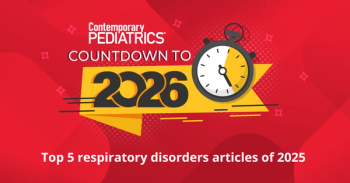
Alopecia areata data: Upadacitinib demonstrates improvements in scalp hair coverage
Achieving the primary end point, 44.6% and 54.3% of patients treated with upadacitinib (15 mg and 30 mg) reached 80% or more scalp hair coverage.
On July 30, 2025, AbbVie announced positive and top-line data from the phase 3 Up-AA clinical program (NCT06012240), in which upadacitinib (Rinvoq) 15 mg and 30 mg demonstrated that 44.6% and 54.3% of patients with severe alopecia areata (AA), respectively, reached 80% or more scalp hair coverage at week 24, according to a press release from the company. Hair coverage was defined by a Severity of Alopecia Tool (SALT) score of 20 or less.1
At baseline, patients with AA had a mean SALT score of 83.8, which correlated to approximately 16% of scalp hair coverage. The primary end point data listed above were compared with 3.4% of placebo-receiving patients who achieved 80% or more scalp hair coverage.
Upadacitinib is an oral Janus kinase (JAK) inhibitor that blocks cytokine signaling pathways by inhibiting JAK1 more selectively than JAK2 or JAK3 in human leukocyte assays. The therapy is approved for several immune-mediated inflammatory conditions and continues to be investigated in diseases such as alopecia areata, hidradenitis suppurativa, systemic lupus erythematosus, and vitiligo.
Secondary end points for upadacitinib
Key secondary end points were also met, including scalp hair coverage of 90% or more (SALT score ≤ 10), achieved by 36.0% and 47.1% of patients in the 15-mg and 30-mg groups, respectively, compared with 1.4% on placebo (P < .001). Both treatment groups demonstrated improvements in eyebrow and eyelash hair as well as complete scalp hair coverage (SALT score = 0) at week 24.
"The sudden and often unpredictable hair loss people living with AA experience can profoundly impact their self-esteem and mental well-being," Arash Mostaghimi, MD, MPA, MPH, associate professor of dermatology and vice chair of clinical trials and innovation at Brigham & Women's Hospital and Harvard Medical School, said in a statement. "There is a pressing need for more treatments that help enable regrowth of scalp and nonscalp hair. I am encouraged by these results that demonstrate the potential of upadacitinib to be an important new treatment option."
The safety profile observed in the 24-week placebo-controlled period was consistent with prior indications for upadacitinib. Treatment-emergent serious adverse events occurred in 1.4% and 2.8% of the 15-mg and 30-mg groups, respectively, with none reported in the placebo group. Discontinuations due to adverse events were low (0.7% for 15 mg; 1.4% for 30 mg). Common adverse events included acne, nasopharyngitis, and upper respiratory tract infection. Serious infections were infrequent, with no reported MACE, malignancies, or deaths.
"Up-AA is the first pivotal program to have ranked and met the rigorous standard of SALT equals 0, indicating complete scalp hair regrowth," added Kori Wallace, MD, PhD, vice president and global head of immunology clinical development at AbbVie. "These data underscore AbbVie's commitment to advancing novel treatments that have the potential to improve the lives of individuals with immune-mediated diseases."
Background of the phase 3 Up-AA clinical program for upadacitinib
Data announced were from the first of 2 pivotal studies from the Up-AA program. Up-AA M23-716 was conducted as a single protocol that includes 2 replicate, randomized, placebo-controlled, double-blind, pivotal phase 3 studies (study 1 and study 2) with randomization, investigative sites, data collection, analysis, and reporting independent for each study.
In study 1 and study 2 period A, participants were randomly assigned to one of 3 groups to receive upadacitinib 15 mg, upadacitinib 30 mg, or placebo for 24 weeks. In study 1 and study 2 period B, participants originally randomly assigned to upadacitinib dose groups in period A will continue their same treatment in period B for 28 weeks. Participants originally randomly assigned to placebo in period A will either remain on placebo in period B or be randomly assigned in one of 2 groups, based on their SALT score at week 24.
In total, study 1 and study 2 periods A and B span 52 weeks. Participants who complete study 1 or study 2 can join study 3 and may be randomly assigned again to receive one of 2 doses of upadacitinib for up to 108 weeks. The 2 trials randomly assigned 1399 participants with severe AA aged 12 to 64 years across 248 sites worldwide.
According to AbbVie, results from study 1, the parallel replicate study, are expected in the third quarter of 2025.
FDA-approved indications for upadacitinib
Currently, upadacitinib is approved in children 2 years or older with active polyarticular juvenile idiopathic arthritis (JIA) and in children aged 2 to 17 years with active psoriatic arthritis (PsA) when TNF blockers have not worked well or could not be tolerated.2
References
- AbbVie announces positive topline results from phase 3 UP-AA trial evaluating upadacitinib (Rinvoq) for alopecia areata. Press release. AbbVie. July 30, 2025. Accessed July 30, 2025. https://news.abbvie.com/2025-07-30-AbbVie-Announces-Positive-Topline-Results-from-Phase-3-UP-AA-Trial-Evaluating-Upadacitinib-RINVOQ-R-for-Alopecia-Areata
- Rinvoq (upadacitinib). Rinvoq. Accessed July 30, 2025. https://www.rinvoq.com/
- Fitch J. Now available: upadacitinib to treat JIA, psoriatic arthritis in patients 2 years and up. Contemporary Pediatrics. June 4, 2024. Accessed July 30, 2025. https://www.contemporarypediatrics.com/view/now-available-upadacitinib-to-treat-jia-psoriatic-arthritis-in-patients-2-years-and-up
Newsletter
Access practical, evidence-based guidance to support better care for our youngest patients. Join our email list for the latest clinical updates.








